
Biosensors are able to detect minute molecules to help us monitor our health and our environment. Scientists are developing sensors that are sensitive enough to detect even the smallest presence of molecules, so that disease or dangerous environmental contaminants can quickly be assessed. Researchers at PC Rossin’s School of Engineering at Lehigh University have created a tiny glass slide of silver with protein receptors applied to it. When the receptors bind with their matching signal molecule, light waves traveling across the chip are perturbed into a recognizable interference pattern. Using this combination of light waves and biomoecules has resulted in a biochip a magnitude more sensitive than other current comparable sensors.

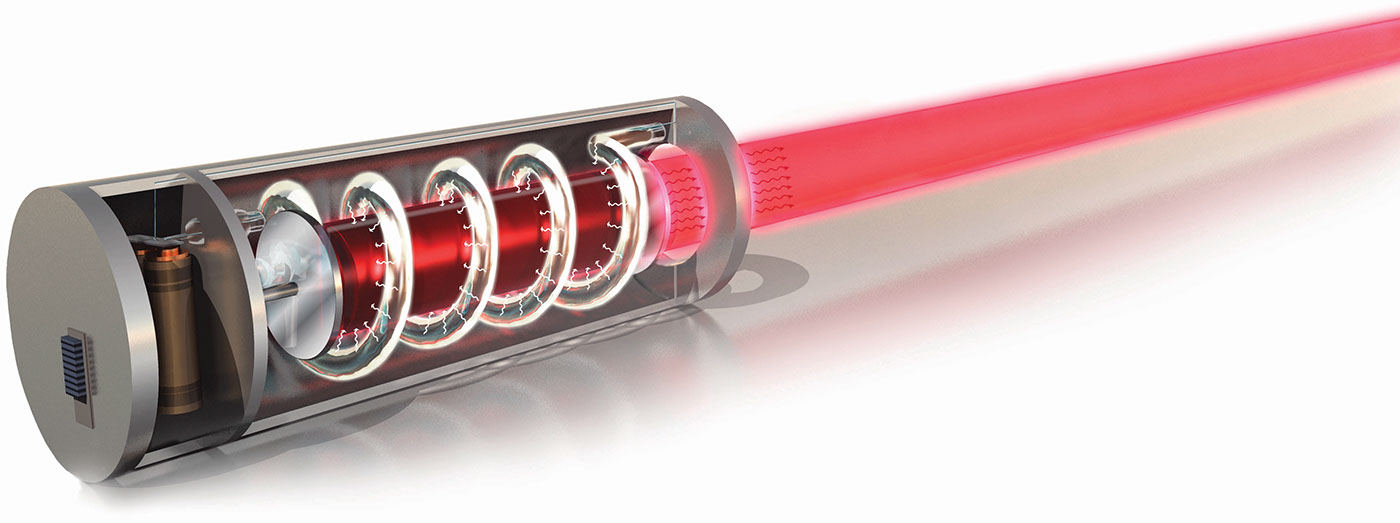
The ruby laser, so named because of the ruby crystal used, was the first working laser. Laser technology has since advanced, and has made many modern technologies possible, from cutting-edge surgeries to DVDs and computers. This 3d drawing was created for Science News magazine's laser special edition.
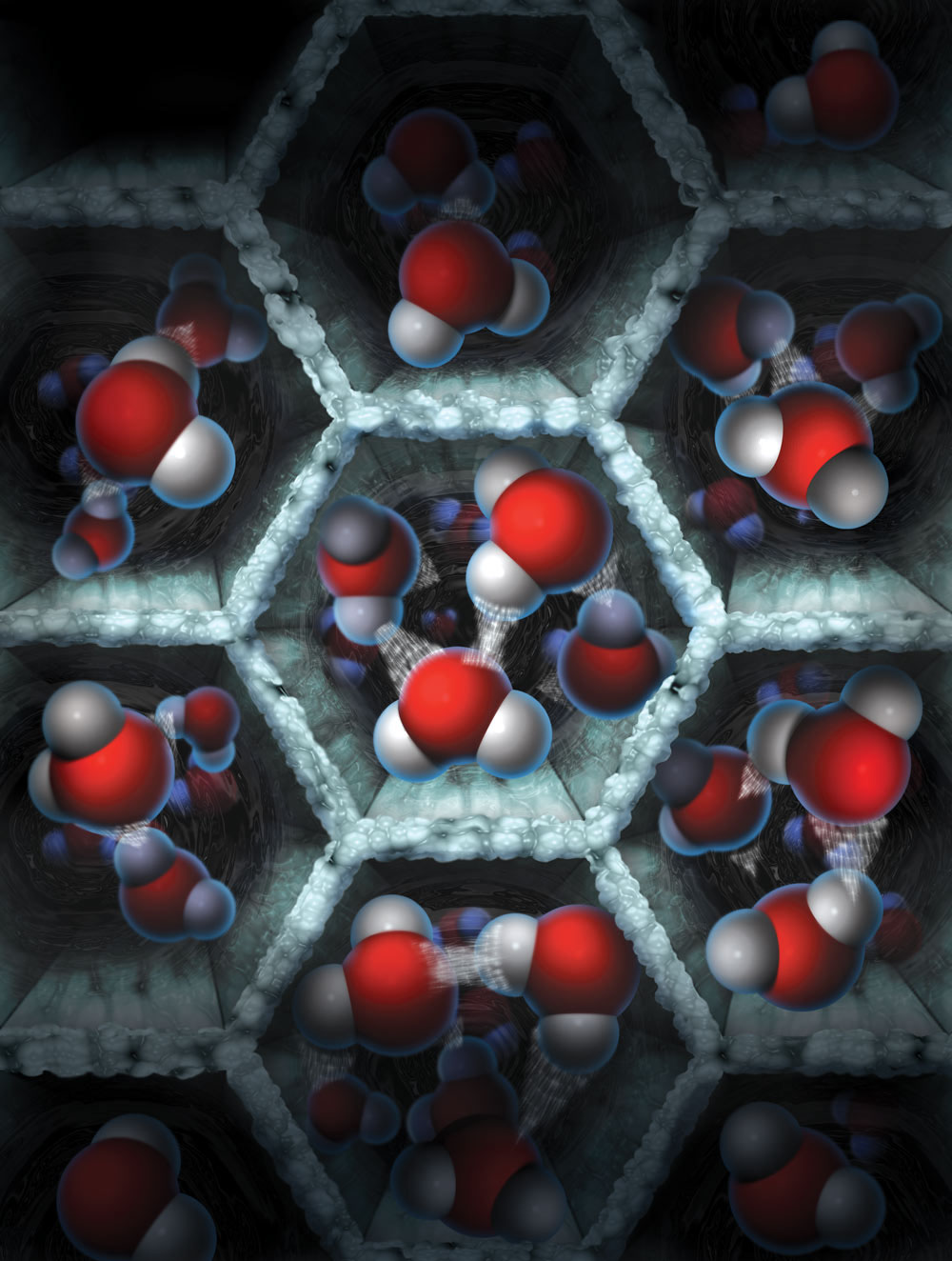
Water molecules behave unexpectedly when supercooled inside nanopores made of silicon.

Compared with the normal dance of water molecules, inside supercooled silicon nanopores water molecules behave oddly.
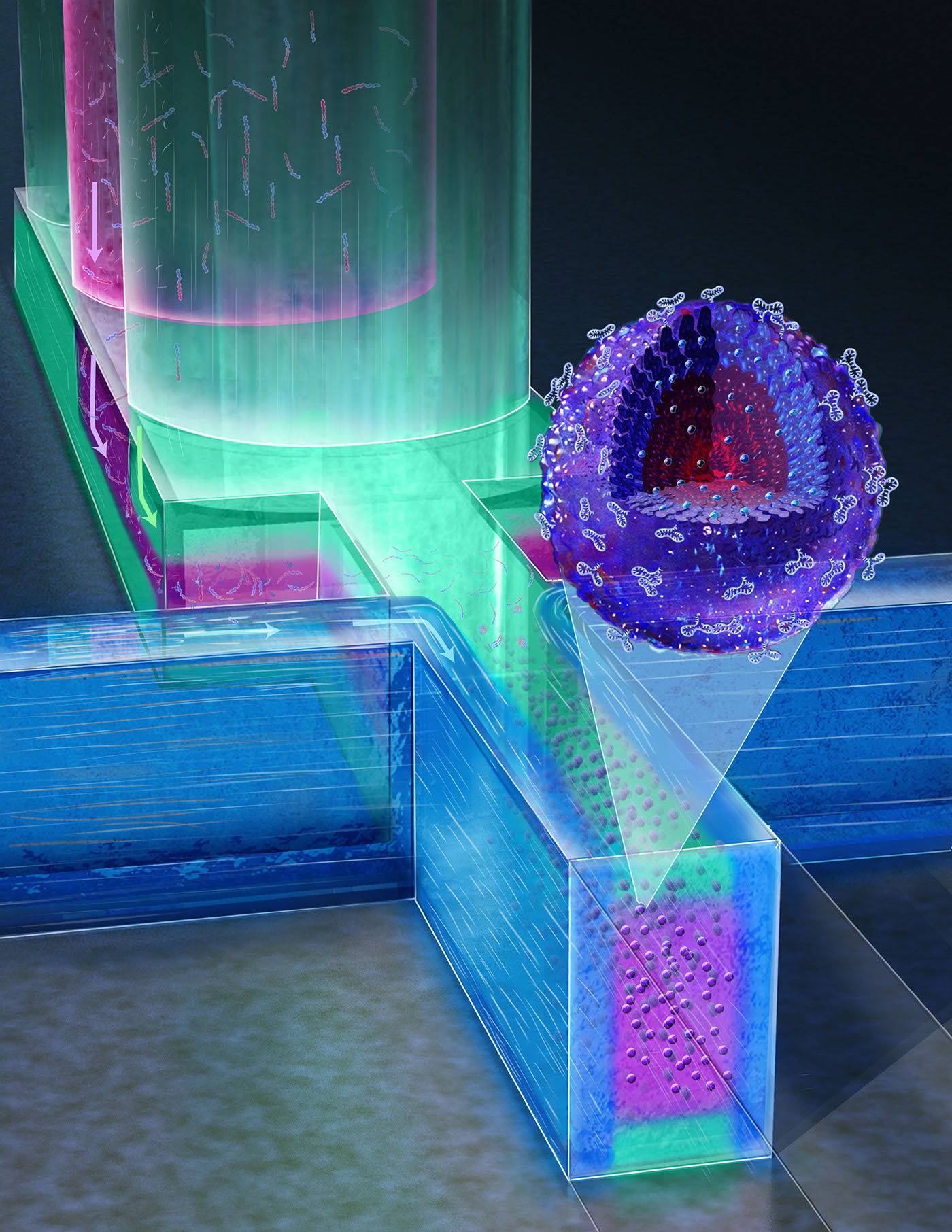
As nanotechnology advances, material scientists are working to improve the efficiency of the manufacturing process. Precise micro-channels and channel inlets effect the flow, allowing for control over the self-assembling nanoparticles.
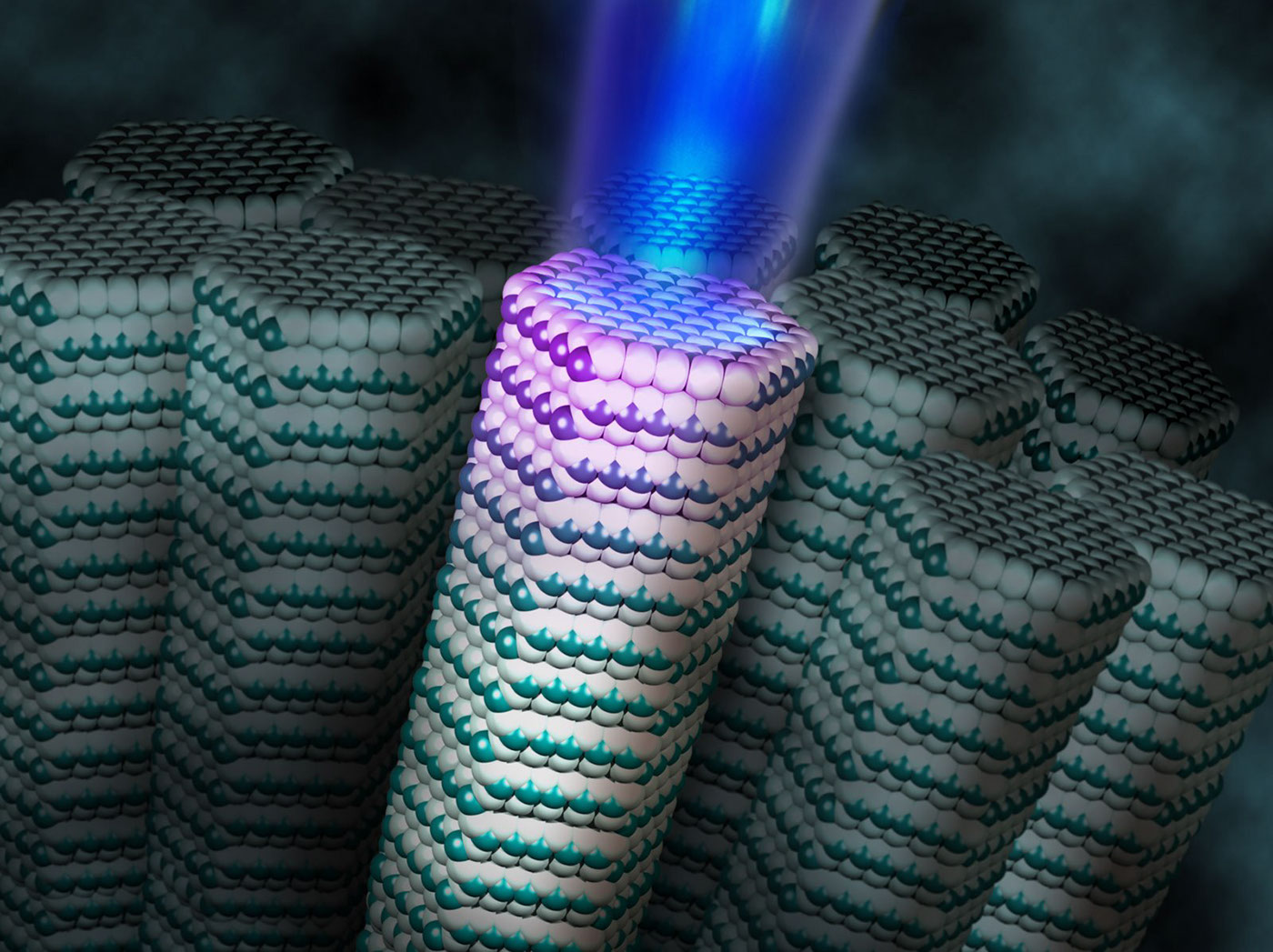
A carpet of nanowires transmit light. By controlling the self-assembly of nanowires and their orientation, researcher Peidong Yang and his colleagues have created devices such as a wire that fires ultraviolet laser light.
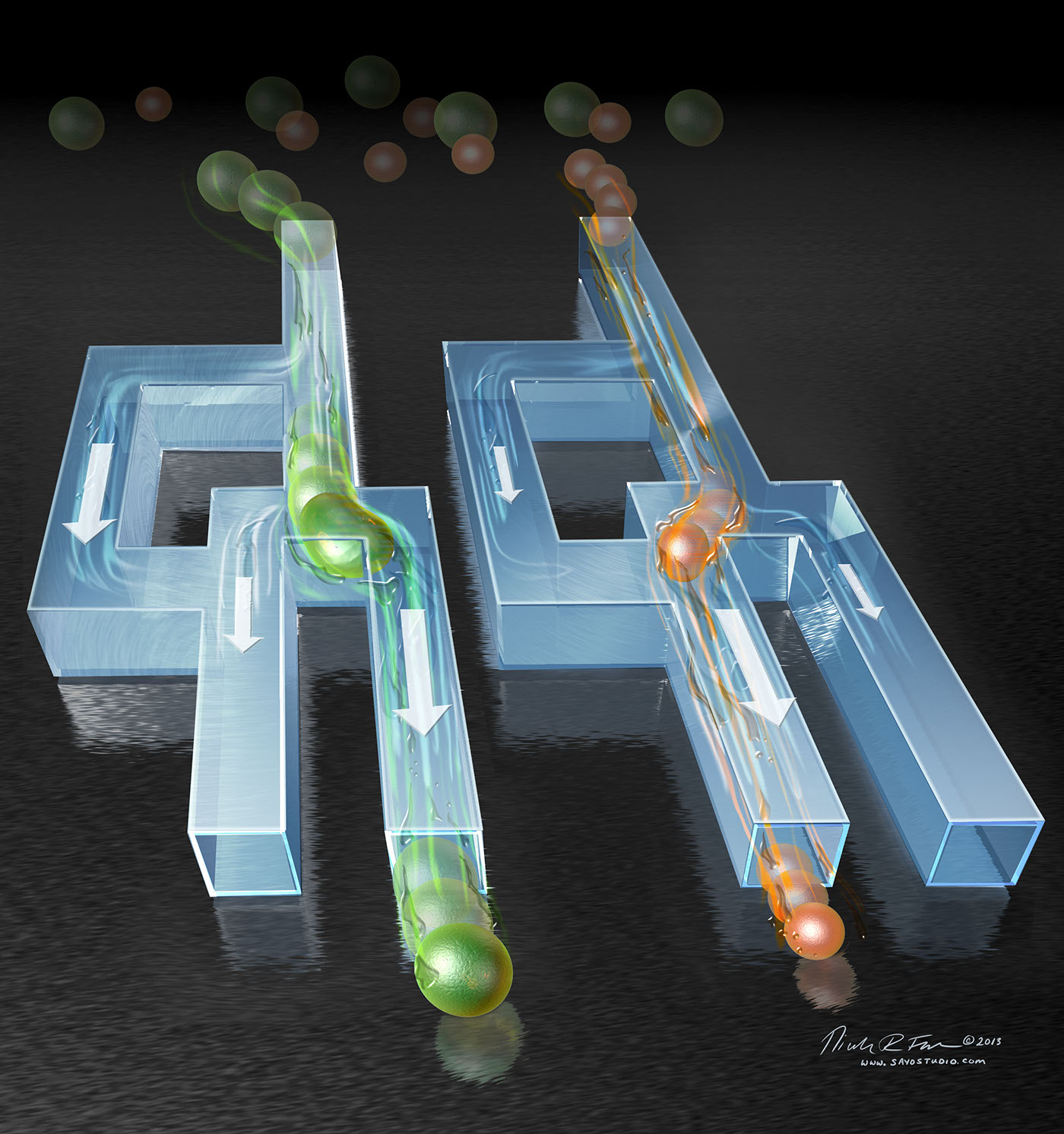
Microparticle Sorting


